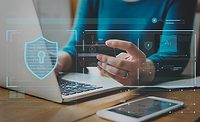Why Smartphones Should Become Your Remote Control for the World

Think about how many times a day you use a password, key, card, or fob — if your day is anything like mine, it's probably in the dozens. What if we flipped the model, and you had one remote control for all of the places, devices and services you need to access?
While it may sound far-fetched, it actually exists today. It's called an identity signal — it acts as your secure digital proxy in the physical world, representing your interests as a human being and telling things:
- Who you are (authentication)
- What you can do (authorization)
- What you want to do (action, such as 'unlock door' or 'submit payment')
The desire for such convenience and simplicity has led some as far as embedding microchips in their hands, however such solutions are extreme, not to mention lacking in critical functionality such as being able to change your identifier or control who can read it. Our personal smartphones and wearables, already with us everywhere we go, offer a much more powerful platform for our personal identity signal.
Today, companies such as WeWork and Dropbox are already using smartphone-based identity signals for things like workplace access control at secured doors, turnstiles and elevators. These identity signals are also used to create personalized experiences and responsive environments (imagine automatically logging into your Zoom account when you enter a conference room for a scheduled call, or automatically locking your computer as you step away from your desk). Over the next year, expect this technology to be applied beyond the workplace in industries like automotive, public transportation, travel, hospitality and retail.
To be useful, an identity signal must be unique to each person and emitted from a person's smartphone or wearable via a signaling protocol built on top of common radio technology other devices can understand, such as Bluetooth Low Energy (BLE). And they must be designed for privacy:
- You have to give explicit consent for sensors and devices to detect your identity signal and interact with it.
- You have the ability to turn off your identity signal or revoke access to any sensor or device at any time.
- You have the ability to control the information shared with each specific sensor or device, depending on the context of the interaction (for example, you can choose to share different information about yourself with one business versus another).
- You own your identity signal and retain explicit control over your personal data.
Like single sign-on for the physical world
While there has been a ton of effort put towards building solutions for our identity in the online world — consider single sign-on approaches like Google's and Facebook's — there has been no equivalent for the physical world.
The proliferation of connected devices has been a catalyst for identity signals to provide that physical single sign-on layer. Since early 2017, nearly every electronic device from TVs to thermostats to cars has had Bluetooth connectivity built in. Each of these smart, Bluetooth-enabled physical devices requires a different app, password or fob to interact with it. As more and more devices enter our lives, this model simply does not scale. That's where an identity signal can help; it acts like a single sign-on plus a universal remote control, both for our own devices and for others we encounter in our daily routine.
The fact that you own your identity signal ensures that the physical world doesn't mimic the current state of the online world, where large corporations track everything you do, then sell that data to marketers. A personal identity signal gives people control over their own data — personal data is not transmitted over Bluetooth, making it unattainable to hackers. Only an encrypted token that’s unique to each interaction is sent, and you can choose who can translate that into information used to serve you.
Imagine a day without having to use apps, passwords, keys, or fobs. It could eliminate a lot of friction:
- Home, car, and office doors automatically unlock.
- At home or at the office, the elevator already knows your floor.
- Your laptop automatically signs you in.
- Public transit recognizes who you are, where you are going, and when you get on/off.
- As you enter your home, the temperature and lighting adjust to your liking.
The possibilities are endless. Your identity signal conveys who you are and what devices should do for you, sharing contextual data like your preferences so devices can adapt and personalize the way they serve you.
At a time when so many things are becoming digitized, people are starting to realize the implications of the incremental sacrifices they make each time they trade their privacy for convenience. Identity signals are setting new expectations for our interactions with digital spaces and devices: we can have a personalized experience without giving up privacy and control.
Looking for a reprint of this article?
From high-res PDFs to custom plaques, order your copy today!







